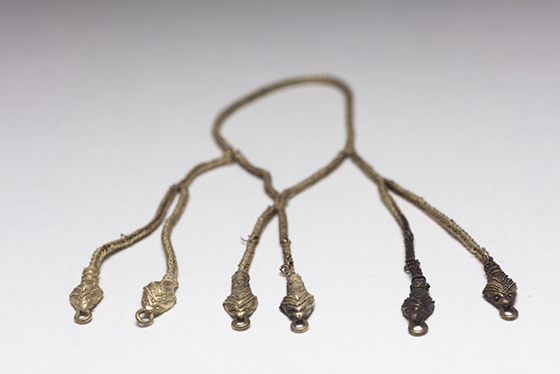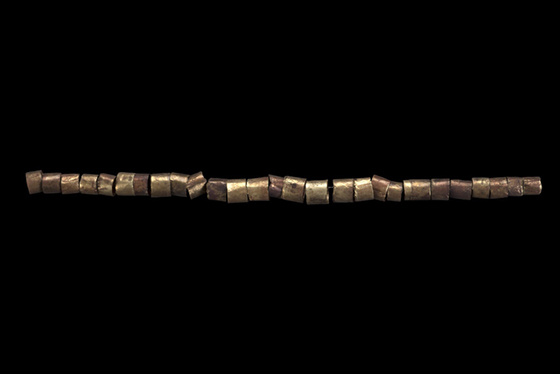> OUR PROJECTS > RESTORATION OF GOLD NECKLACES FROM THE REGOLINI-GALASSI EXCAVATION
RESTORATION OF GOLD NECKLACES FROM THE REGOLINI-GALASSI EXCAVATION
March 2019
In the Necropolis of Sorbo in Caere (today the town Cerveteri), Fr. Alessandro Regolini and General Vincenzo Galassi discovered in 1836 one of the richest and most representative Etruscan tombs dating from 675 to 650 B.C. The artifacts found are now exhibited in Hall II of the Gregorian Etruscan Museum, in the Vatican Museums.
The collection is one of the most complete testimonies to the “Orientalizing” phase in ancient history, a cultural phenomenon that involved Etruria and the entire Mediterranean basin in an extended circulation of goods and knowledge from the East thanks to the activity of the Phoenicians and Greeks.
This project primarily concerns the restoration of two necklaces composed of several gold cylinders (30 and 28) and three gold mesh chains, each of which terminates with a ring in the form of a half pinecone and decorated with granulated linear motifs. Granulation is a sophisticated ancient goldsmith technique, which has remained unparalleled in the work of contemporary artisans; it involves the application of microscopic gold spheres welded to the surface of the jewelry in order to create decorative motifs and figures.
The Italian & International Patrons of the Arts in the Vatican Museums wish to thank CARTIER SOUTH-EAST EUROPE and Francois-Marc Sastre, General Director of Cartier South-East Europe, for supporting the restoration of these golden precious Etruscan artifacts from the Regolini-Galassi excavation in Cerveteri.


|